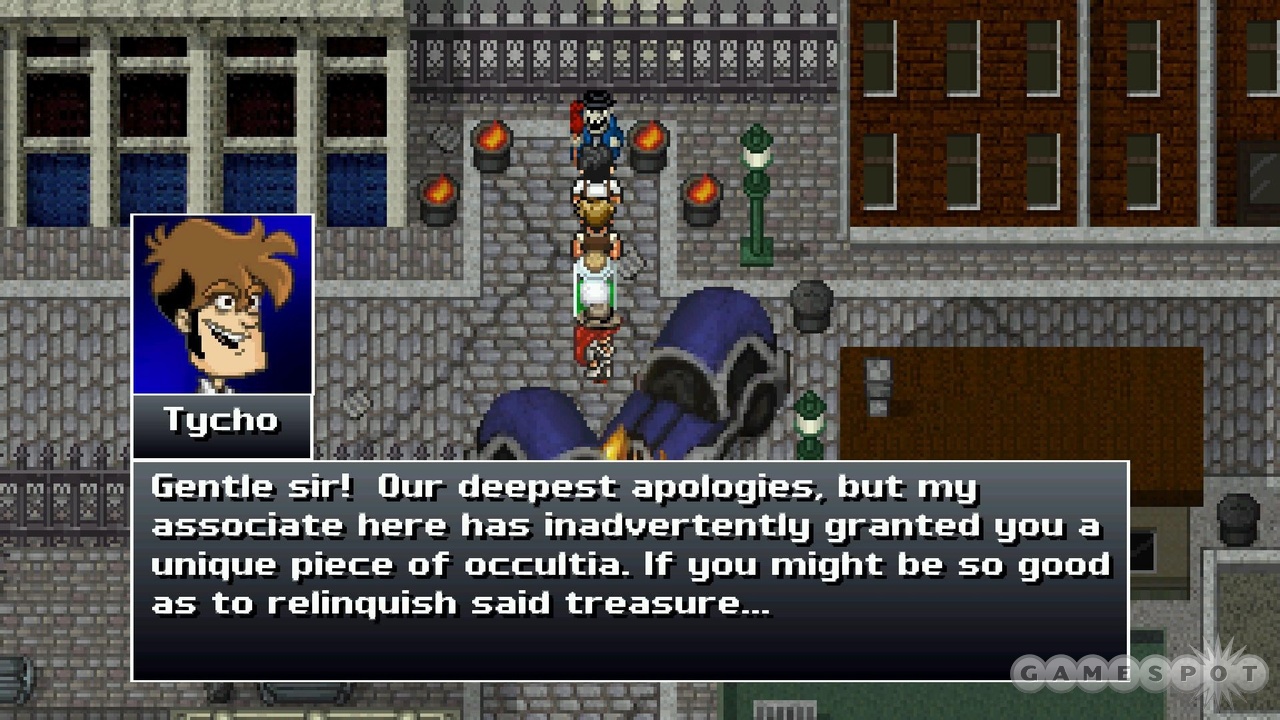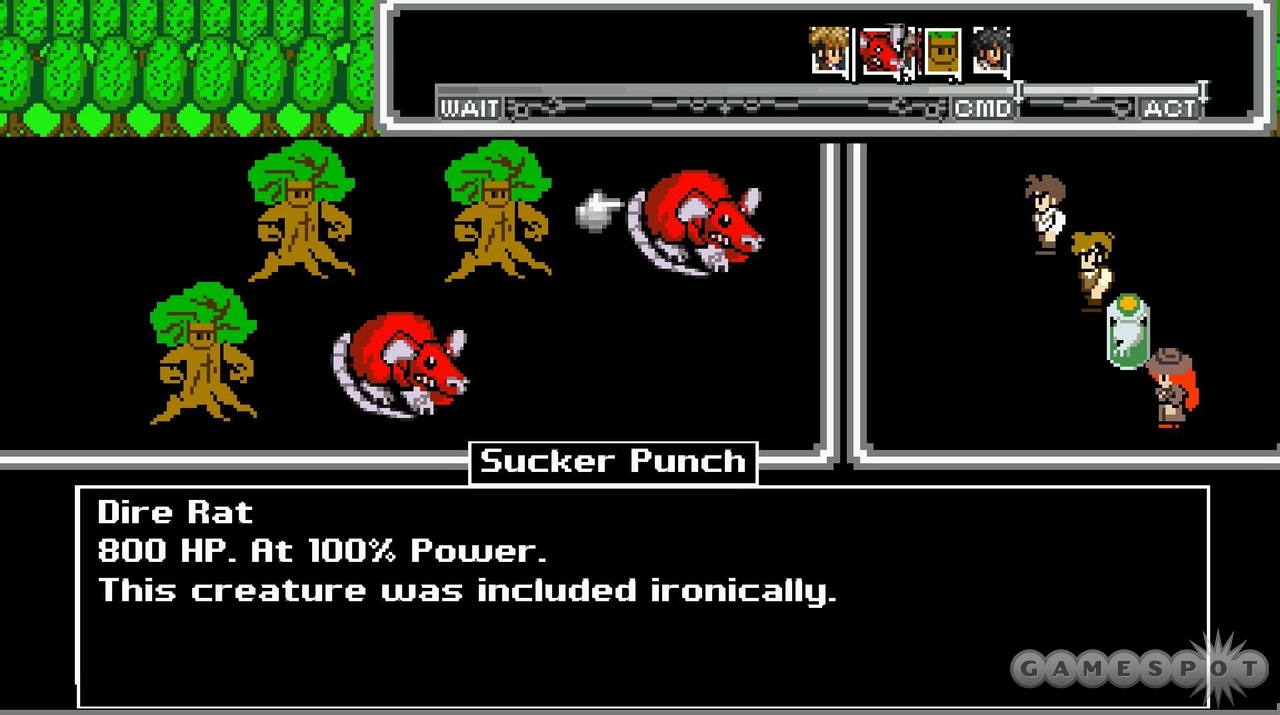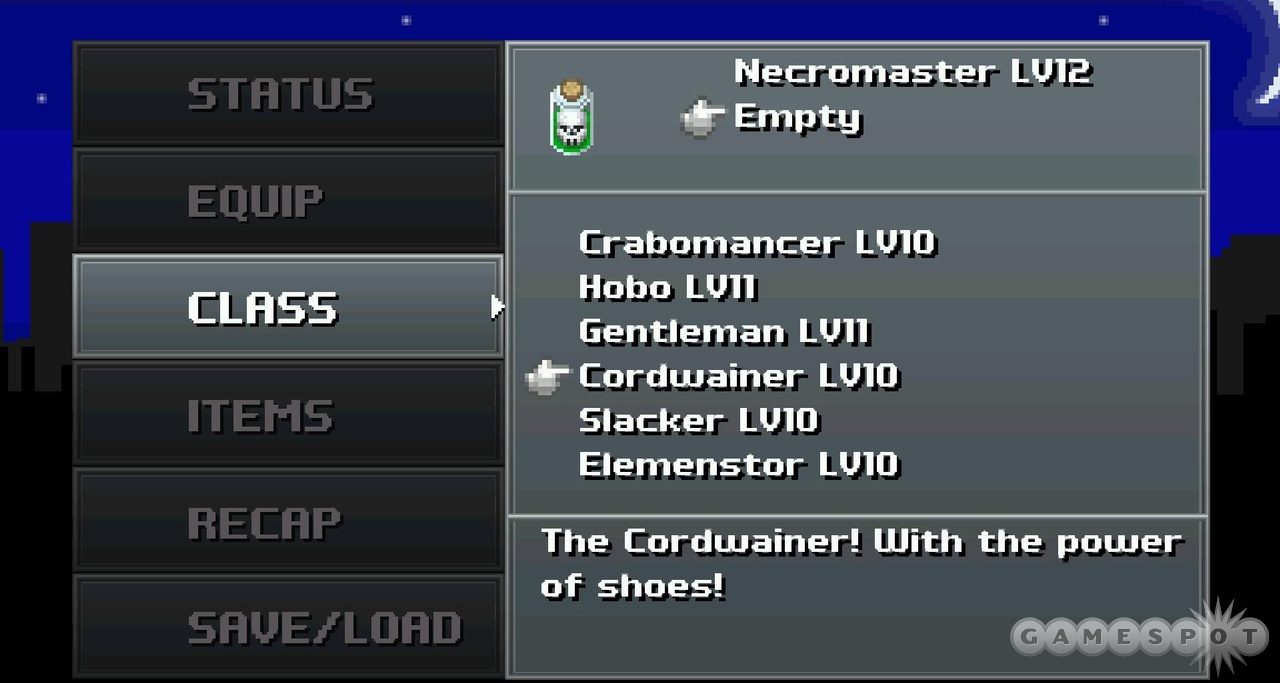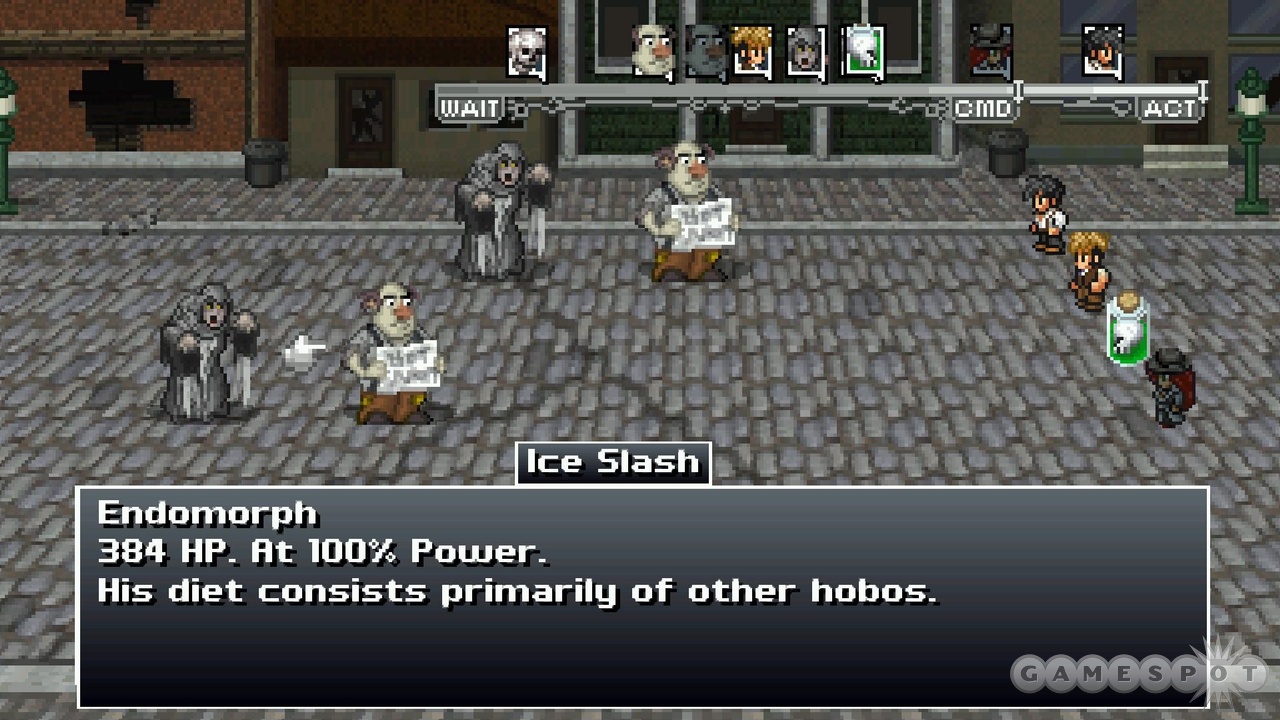After a respite of almost four years, Gabe and Tycho, proprietors of the Startling Developments Detective Agency, are back on the case. Penny Arcade's On the Rain-Slick Precipice of Darkness 3 picks up where its predecessors left off, but much has changed since the duo's last outing. Zeboyd Games has taken over development, and in its hands, the series has taken on the look and feel of a 16-bit, menu-driven Japanese role-playing game.
The good news is that the series' signature offbeat humor is as vibrant as ever, and On the Rain-Slick Precipice of Darkness 3 is worth playing for the laughs alone. The better news is that the combat in this loving tribute to the heroic quests of old is smartly designed and stands up today whether you're a seasoned player of 16-bit RPGs or not. It could have benefitted from a wider assortment of activities for you to engage in, but the few things this game does, it does really well.
No experience with the first two chapters in the saga is necessary to jump into the third. The game quickly brings you up to speed, and though Tycho stuffily spouts sentences of intricate, Lovecraftian lore from time to time, there's little reason to worry if you find yourself a bit befuddled by the finer points of this cosmic struggle. What drives you forward on your quest isn't so much a desire to see what happens next as it is a desire to see who will say what next, or what strange and hilarious monster is just around the bend. The interplay between the pompous and loquacious Tycho and the slightly less intellectual Gabe is filled with moments that elicit guffaws, and though there's no voice acting in this episode, the personalities of the characters come through in the writing loud and clear.

Earlier episodes had a character who stood in for you, but this character is gone, and his or her departure from the series is addressed with a humorous lack of appreciation by the game's heroes. This time around, Tycho and Gabe are joined for the bulk of their quest by a private eye named Moira and a skull in a jar named Jim. You move the party around a map of New Arcadia, but you won't spend any time wandering aimlessly, wondering where to go next. Instead, you can only move from node to node along a restricted path, and as you progress, nodes for new locations (like the dilapidated Pelican Bay boardwalk and the distinguished Bank of Money) open up.
Once in these locations, you can move freely, but there's rarely much room to explore, though you do find the occasional weapon or other goodie in treasure chests just off the beaten path. Still, there's generally little reason to do anything but keep advancing from one group of monsters in your path to the next, and the relentless focus on combat will have you longing for a bit of variety at times.

But at least the combat that you spend most of your time locked in is great. There's nary an original idea at work in the battle system, but the concepts are lifted from a number of games and assembled into something more than just a rote imitation of early JRPG combat. You use menus to issue commands to your party members whenever it's their turn to attack. But this isn't a straight turn-based system. Portraits of each character and enemy in battle scroll along a timeline that's broken up into three sections: wait, command, and action.
When characters reach the command prompt, you issue them orders, and at the end of the line, they carry out your commands before returning to the start of the wait phase. Characters with higher speed ratings move along the line faster and get more opportunities to act as a result. And some of your characters' abilities can interrupt enemies; if you perform one of these on a monster when it's between the command position and the action position on the timeline, you knock it back into the wait phase, staving off its attack for at least a short time.
You need to use abilities like this to your advantage, because you hardly ever fight enemies you can just easily slaughter by repeatedly selecting the attack command. There are no random encounters, so you can't spend time grinding by battling weak enemies. Instead, it almost always behooves you to select your actions with care, capitalizing on environmental weaknesses your foes might possess and perhaps interrupting powerful opponents to give them fewer chances to act.
By default, your characters start battle with one magic point and earn an additional magic point per turn, which forces you to weigh your options carefully--do you use that two-point ability now, or wait a few turns and then cast a devastating five-point spell? Because you can't just plow through most battles on autopilot, your struggles are involving and your victories rewarding. There are concrete in-game rewards for your victories, also; you level up almost constantly, getting more powerful and gaining access to handy new abilities.
It's not your characters that level up. Rather, it's your classes. Each member of the party starts with a default class that cannot be changed: Gabe is a brute, Tycho is a scholar, and so on. But early on, you also begin collecting class pins, and in addition to his or her default class, each character can eventually equip two of these pins, gaining access to the abilities of those classes. With the hobo pin equipped, a character can unleash the life-draining scourge of hoboism on foes, and use the powerful bumfight ability. The gardenar pin lets you conjure gardens that benefit your team (the garden of tranquil waters) or gardens that harm your enemies (the garden of dangerous bees). And the dinosorcerer pin lets you turn into a dinosaur! Awesome!

You can't ever have all of the pins equipped at once, but pins you don't have equipped continue to level up, so you can freely switch between them without putting yourself at a disadvantage. Experimenting with the varied abilities of the classes and continuing to unlock new abilities as you progress is another element that keeps the combat compelling.
And then there's the humor. It's not just the dialogue between Tycho and Gabe that will have you laughing. It's the names, descriptions, and abilities of the monsters you encounter. The description for hostile, animated cabinets--stabinets, as they're known--informs you that these pieces of furniture are "great for storing your excess rage," while the description of a certain type of enemy clown helpfully states, "OH NO A CLOWN." Tycho dismisses one foe's verbal threats as empty; the foe proceeds to use a special attack called Kill Tycho, which kills Tycho. Each new area brings with it an assortment of amusing new enemies. At times, the pace flags as you find yourself repeatedly fighting the same types of powerful enemies in lengthy battles, but these minor slogs are worth enduring for the new enemies and areas that lie beyond.

Those areas complete the illusion that this is a game from the 16-bit era, and the colorful variety of environments makes this game pleasant to behold in all its quaint glory. The combat is terrific and the writing is hilarious, but it's unfortunate that there isn't more to do. It's convenient that a lot of typical JRPG busywork like stocking up on potions has been streamlined right out of the equation, but at times you might wish for a town to explore freely or some other break from the near-constant combat treadmill. And though the combat is pleasantly challenging throughout, a massive difficulty spike at the end of your roughly 12-hour quest makes the final encounter an ordeal the game hasn't prepared you for. But it's the journey that matters more than the destination, and at the refreshingly modest price of just $4.99, the bounty of laughs and the satisfaction of hard-earned victories aplenty make On the Rain-Slick Precipice of Darkness 3 a journey well worth taking.